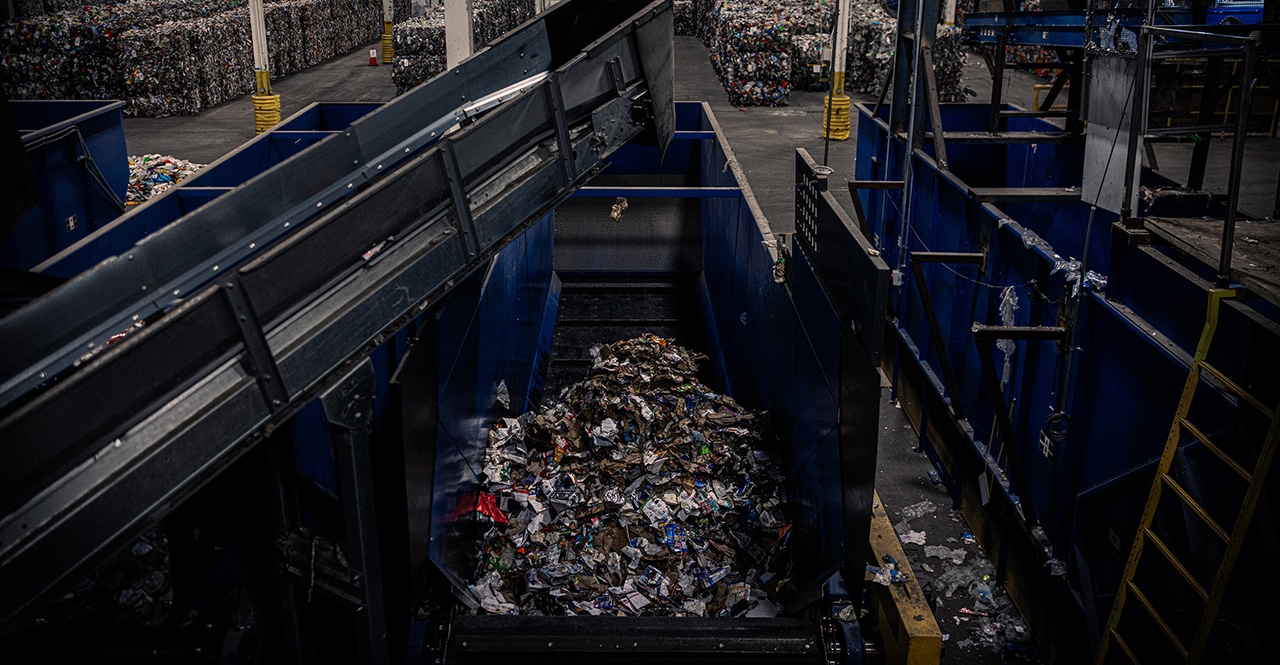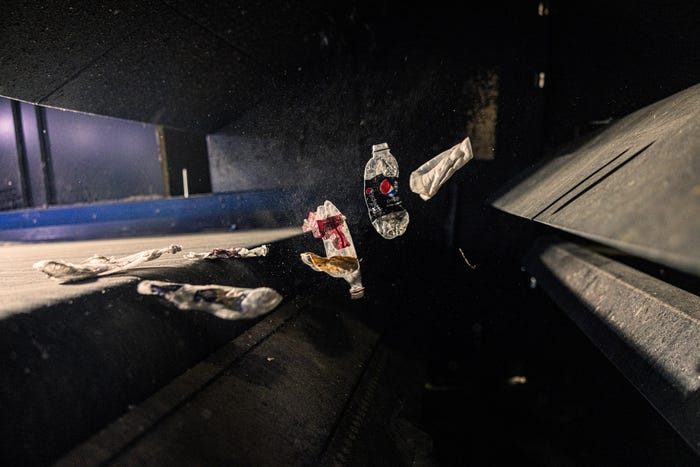AMP’s New Design Scheme Aims to Flex Artificial Intelligence Capabilities in MRFs
AMP, launched in 2014 to prove artificial intelligence (AI) and robotics as useful to recyclers, says robots and machine learning already have the robustness to do much more and is working to flex those capabilities. The plan is to build what AMP founder and CEO Matanya Horowitz calls “next-generation facility designs.”

Imagine walking into a materials recovery facility (MRF) that looks like an encapsulated ghost town. Not a soul mans a single workstation and only the occasional member of a skeletal staff walks by. But on closer glance you see a flurry of activity—octopus-like robots swooping film off conveyor belts, while an army of companion soldiers lift aluminum cans, paper and plastic packaging, organics, and other materials from simultaneously running, high-speed lines.
Some industry tech gurus say that’s what the MRF of the future will look like and believe that day may not be so far off. AMP, launched in 2014 to prove artificial intelligence (AI) and robotics as useful to recyclers, says robots and machine learning already have the robustness to do much more and is working to flex those capabilities. The plan is to build what AMP founder and CEO Matanya Horowitz calls “next-generation facility designs.”
For years the Colorado company designed AI-powered robotic systems for existing facilities, requiring little change to their operations. It was the cheapest and quickest way to have meaningful impact. These retrofit projects are ongoing, but the last couple of years have seen the addition of an alternative direction—creating new systems from scratch around the robots and the AI that drives them.
“We thought we might be able to make some really meaningful changes if we built AI design into a facility from the start. The MRF could be a fundamentally different beast with virtually fully automated systems and more reliability,” Horowitz says.
He touts this approach, considering material flow and space upfront, and enabling more integration of robots and other systems, as a way to bypass a lot of day-in-and-out headaches nagging operators. The design is said to go further than retrofits in mitigating issues like downtown triggered by jams or material getting stuck in screens and workers calling out—among glitches that come with the territory.
Building automated systems from the ground up has allowed the few operators who have gone this route to monitor every material stream simultaneously and optimize the entire facility across these streams. It’s meant being able to replace whole classes of maintenance-intense equipment. And, besides mitigating staffing issues, especially on overnight shifts, operators can run more shifts cheaper, Horowitz says.

One of the earliest systems of this type, in Cleveland, can sort up to 60,000 tons a year without being touched by a human hand, says Kevin Papich, director of facility operations at AMP.
“That’s because this fully automated system knows in real time the composition of what we’re sorting to get more value out of the waste streams.”
A lot of time has gone into designing with data collection in mind to make vision systems’ job easier and improve their efficiency. The goal is to get better continuous material characterizations, which track types and numbers of individual items. It’s done with wider belts, moving at about 1,000-feet a minute, enabling the systems to “see” what’s now more spread out that ordinarily piles up at residue lines in high-burden areas.
New automated sortation systems are built with set-ups at different points to recirculate material. This means higher throughput on the first pass without having to worry about residue rates. Operators get a second or third shot at capturing more to improve purity.
This isn’t easily done as part of a retrofit, at least in a way that meaningfully changes the system performance profile, Horowitz says.
It's a new set of equipment that takes a significant amount of space and forethought. And recirculated material needs to be balanced with the new material coming in.
“By building the entire system expecting that recirculation, we can control any unintended side effects,” he says, likening designing this way to building an electric vehicle.
“If you build one from the ground up around the capabilities of electric motors you get something more differentiated. If you build a hybrid or just swap a motor it may be a little better, but you don’t really take advantage of the new generation of technology.”
Besides the concepts aiming for systemwide improvements, AMP has made more microlevel changes, like air jet-powered optical sorters that clean themselves and dislodge whatever gets stuck inside them. They’ve proven to jam less even when sorting ordinarily problematic material. And they can be installed in less accessible places because they don’t depend on manual recalibration.
Pairing other components with AI can push capabilities further. This could entail building infrared into the tech stack. While, unlike infrared, AI can identify items based on details like brand and form, infrared has abilities AI does not have.
“So, when we combine infrared with AI, we can do anything either system can do. We can identify papers, plastics, metals, organics … now we start to expand the scope of what is sortable,” Horowitz says.
Since he and his team had a new way of thinking about what a MRF should look like, they figured they would have to build it themselves. They’d be stepping out of their world as they knew it and started out skeptical about going down this path.
“There are so many types of equipment that go into a MRF. But what we found that changed our thinking is we could replace entire classes of equipment with AI-built intelligence sorting devices. We could replace whole classes of screens with AI technology. When we saw this, we said we can reduce MRFs down to mostly our technology and have a chance to build something great,” Horowitz says.
“We will have more retrofit projects, but the biggest bang for the buck is when the whole system can be self-aware and expand the AI’s capabilities.”
About the Author
You May Also Like




.png?width=300&auto=webp&quality=80&disable=upscale)